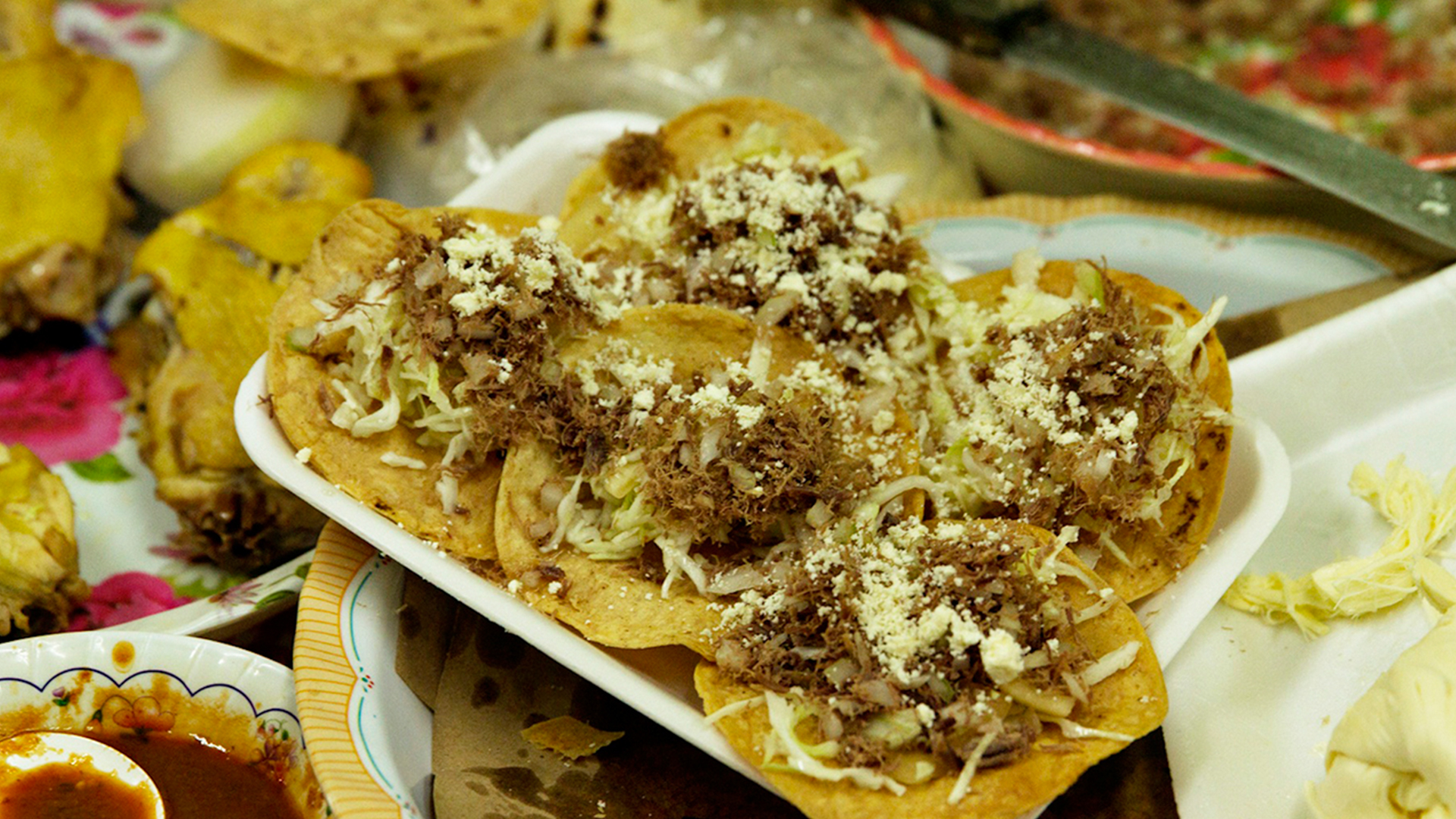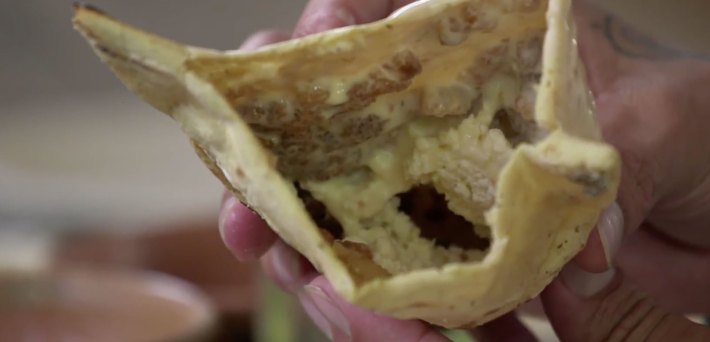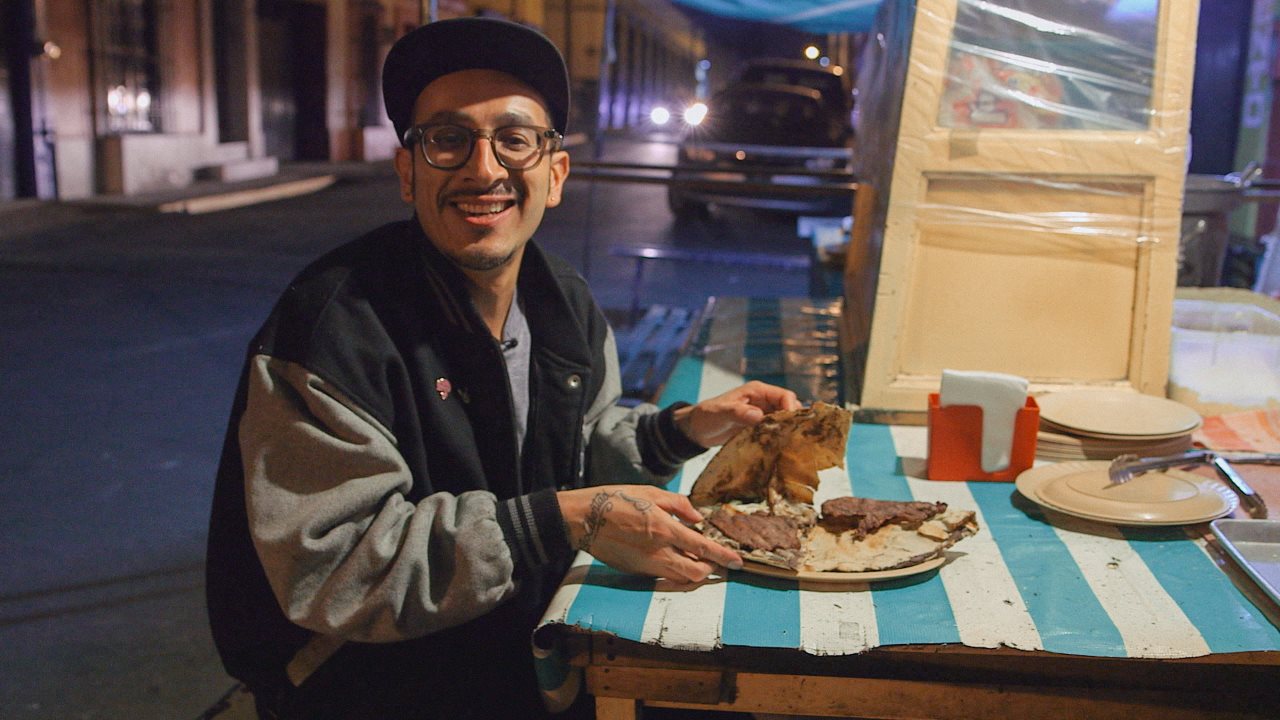Welcome to What to Watch, where L.A. Taco staff picks some of the best, culturally important, and entertaining films, TV, and videos to stream or watch on TV. What are you watching, Team Taco?
'The market is really the best place to get to know a community, it’s the crossroads of a community, it’s also where all the different textures and flavors of a certain culture come together.'
[dropcap size=big]F[/dropcap]ive years ago, Daniel Hernandez, the editor of L.A. Taco, took center stage in the Munchies Guide to Oaxaca, a series that still circulates virally on Facebook and YouTube among Oaxaca-philes and Oaxaqueños in the United States. In the series, Hernandez drunkenly hobbles down the streets of Oaxaca tasting several mezcales, trying traditional and fine dining restaurants, and fully immersing himself in the culture.
The Munchies Guide to Oaxaca debuted in late November on the Viceland cable channel, and is currently available online in five parts.
In Part 1 of the video, Hernandez starts with breakfast at a market to try the local favorites. He samples a chilacayote drink that has piloncillo, pineapple, and lime rinds. (A drink you can find here in L.A. at Gish Bac, it tastes like a liquid and candied sweet potato). Next he comes across a vendor and grill combo, where you can create your tacos or tlayuda set. Diners select their meat and the puesto will grill it for you or you can take it home. “The system is pretty magical,” the host says.

After breakfast, Hernandez pops in to the local watering hole for a drink the local bartender calls suero (or chelda/michelada). The bartender tells hims that the key is to never exceed the beer pour.
Hernandez learns about the subtleties and nuances of corn at restaurant Itanoni, which specializes in all things corn/maize. Here he tries an atole blanco that has a particular taste native to the region. He also drinks tascalate, which is a drink made of ground corn, cacao, and achiote. The owner explains that the flavor of corn is impacted by the way it was harvested and cultivated, as well as the geography. One maize product can wildly differ from another based on such a small detail, especially because Oaxaca has so many microclimates. The people of Oaxaca treat maize very seriously and have centuries and centuries of tradition at harvesting corn.

[dropcap size=big]O[/dropcap]f course, there is a pitstop for a tlayuda at a street vendor. The host deconstructs the Oaxacan specialty to its bare components and digs in. (He brought it back to L.A. when he came upon a worthy tlayuda in Los Angeles.)
Hernandez ends the night by checking out a fine dining scene. Casa Oaxaca is an upscale restaurant that uses the techniques and culinary traditions of the region. Chef Alejandro Ruiz and Hernandez share as a botana a blue corn tostada with salsa de molcajete. For the entree, they have a tlayuda with steak served medium rare.
Oaxaca is a beautifully complex region in Mexico and it definitely has some roots in L.A. Lately it has had it’s moment to shine in pop culture, but Oaxaca is much more than what is seen on screen. And as viewers will see in Parts 2 and beyond in the Munchies series, the diversity and complexity of the state in southern Mexico is well reflected in Los Angeles food today.
RELATED: Review: For Mexico and Los Angeles, Roma Immortalizes the Strength of Domestic Workers







